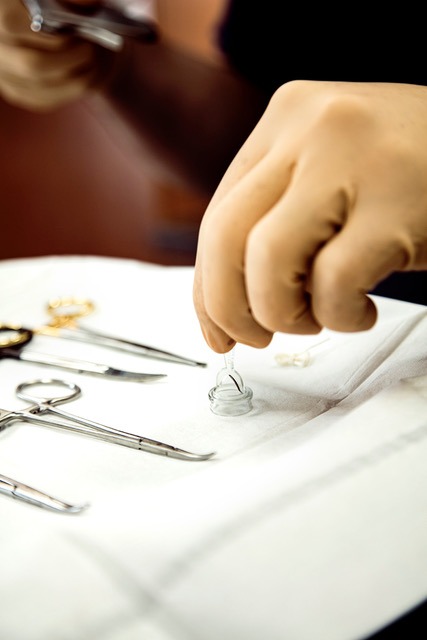Newborn circumcision, also called neonatal circumcision, is an elective surgical procedure in which the foreskin is removed. The surgery generally lasts only a few minutes and is always performed under local anesthetic. Newborn circumcision requires a recovery period of several days, but the majority of babies heal quickly.
Postoperative complications occur in about 2% of cases. However, these issues are usually minor if the surgery was performed by an experienced urologist. These complications are typically the result of parents failing to comply with the postoperative care instructions.
Generally, parents choose to have children circumcised for religious, cultural or esthetic reasons. Statistically, circumcision is less frequent among francophones, particularly in Quebec.

Are there ever medical reasons to circumcise a baby?
Later in life, circumcised males are statistically less likely to contract certain sexually transmitted diseases such as HIV and HPV as well as penile cancer. And women who are partners of circumcised men are less likely to get cervical cancer.
Circumcision can also prevent certain other medical problems such as phimosis or recurrent balanitis.
Note that over 90% of uncircumcised boys can’t pull back their foreskin manually before the age of five or six. This is natural: the skin should never be forcibly pulled back, as this can do the child harm.
What are the contraindications to newborn circumcision?
Other contraindications include hypospadias (a birth defect that effects the urethra) and a buried penis, both of which can be diagnosed by a urologist during an examination.
Is there an optimal time to circumcise a baby?
Once they’re several months old, some children start to become chubby and may, as a result, have a partially buried penis. This can make the postoperative care more complicated. Additionally, the risk of postoperative adhesions is greater for chubby infants.
What technique will be used to perform the circumcision?
Whichever circumcision instrument is used, the key consideration is how much of the skin and mucous membrane should be excised. The primary challenge the surgeon faces is to stretch the foreskin enough to be able to introduce the circumcision instrument.
During the circumcision surgery, it’s crucial for the surgical site to be aseptic (free of bacteria, viruses and other micro-organisms). Additionally, it’s important that the excision is neither too large nor too small, that the glans is completely exposed and that the bleeding is carefully stopped.
Dr. Marois favours the Plastibell™ technique for neonatal circumcision. This technique has been used for years and involves covering the head of the penis with a plastic ring that detaches after the procedure. The ring is gently fitted around the glans and the foreskin is laid over it. A cord is then wrapped around the ring, preventing blood circulation in the foreskin.
The Plastibell™ is very quick to put in place and doesn’t cause any bleeding. The circumcision is complete when the ring falls off of its own accord, which occurs about seven days after the procedure. The resulting circumcision scar is perfectly straight. Moreover, the risk of removing too much skin is low and the glans remains protected by the ring during the entire procedure.
This is the safest circumcision technique for babies and has been effective for more than 30 years. It’s, moreover, the most widely used method among Quebec surgeons who perform newborn circumcision.
In addition, the procedure is rapid, nearly painless under the anesthetic and results in minimal postoperative bleeding. This is why Dr. Marois favours using the Plastibell™ technique for newborn circumcision over the Pollock technique, which uses a Gomco or Mogen clamp.
Given that the risk of bleeding is very low, you can leave the office shortly after the circumcision procedure.
How is a circumcision performed on a newborn or an infant?
Before the surgery, sugar drops are given to the infant. These have a euphoric effect, which improves the efficacy of the anesthetic. A dorsal penile nerve block is then administered by injecting a local anesthetic at the base of the penis. This is the most unpleasant moment of the surgery for the child, but only lasts about five seconds. The parent who’s present in the operating room is encouraged to take the baby to console him or give him milk for five minutes.
For the circumcision procedure, the baby will be placed on his back. Most newborns cry a little, as their legs are held in place with straps. Preparing the glans for circumcision is the longest part of the surgery. It takes a few minutes and involves dilating the foreskin around the glans, cleaning any secretions and detaching the frenulum. The circumcision itself takes less than minute.
The circumcision begins with a small incision in the foreskin. Next, a ring of appropriate size is fitted over the head of the penis then secured with a cord. After a few minutes, the skin at the distal end of the cord is excised. At the end of the circumcision procedure, Polysporin ointment is liberally applied to the area. The ring should fall off by itself within 10 days after thecircumcision. The residual foreskin will become white or sometimes black, like a newborn’s navel after the umbilical cord has been detached.
What are the possible complications of neonatal circumcision?
- Small bruises at the base of the penis are common after application of the anesthetic.
- Bleeding occurs in some cases, but very rarely.
- Infection of the penis occurs in some cases, but very rarely if postoperative care is properly administered.
- Redness and swelling in the foreskin may occur, but won’t last long.
- In rare cases, the ring can get stuck and will need to be manually removed by the surgeon.
Contact us to learn more about newborn circumcision or to schedule an appointment at a urology clinic in Montreal, Laval, Greenfield Park or Quebec City.


